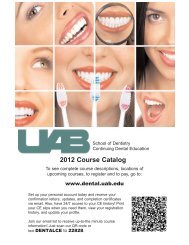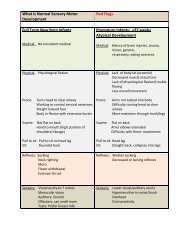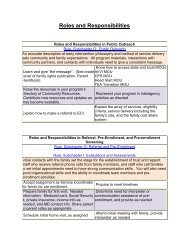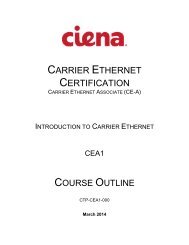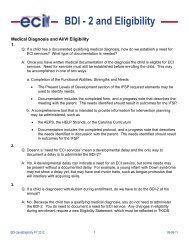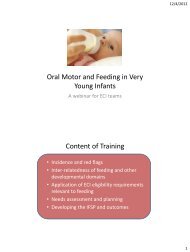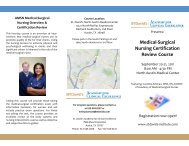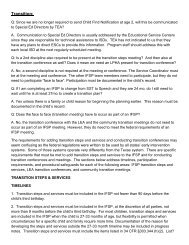6 Months
6 Months
6 Months
You also want an ePaper? Increase the reach of your titles
YUMPU automatically turns print PDFs into web optimized ePapers that Google loves.
Typical<br />
Recognizing Early Motor Delays<br />
A Comparison Examination of 6 Month Old Infants<br />
Atypical<br />
Sitting<br />
• Shows stable head and trunk<br />
control with active extension<br />
through the thoracic spine<br />
• Reaches with one arm at a time,<br />
using a wide base of support in<br />
the lower extremities<br />
• Struggles to maintain head<br />
upright and in midline; cannot<br />
activate vision or explore because<br />
so much effort is required to<br />
remain upright<br />
• Must be supported high up in the<br />
chest for stability<br />
• Exhibits decreased trunk<br />
extension and freedom to reach<br />
Horizontal Suspension<br />
• Demonstrates full, sustained<br />
extension in the neck and upper<br />
thoracic spine, down through the<br />
hips and legs<br />
• Lifts head in midline and<br />
extends through the upper<br />
thoracic spine only briefly<br />
• Does not exhibit extension<br />
through the spine and hips<br />
Protective Extention<br />
• Easily and quickly brings<br />
arms forward in a full protective<br />
response when tipped toward<br />
the surface<br />
• Props immediately on one upper<br />
extremity when reaching for a toy<br />
• Does not bring upper extremities<br />
forward to the surface in a<br />
protective response<br />
• Displays inadequate antigravity<br />
neck and trunk strength to free<br />
the arms to come forward<br />
Standing<br />
• Exhibits immediate sustained<br />
weight bearing on extended<br />
lower extremities; turns head<br />
freely to look around<br />
• Keeps hips slightly flexed and<br />
somewhat behind the shoulders<br />
• Uses upper extremities to assist<br />
in stabilizing the trunk<br />
• Fails to initiate or sustain active<br />
weight bearing when placed in<br />
supported standing<br />
• Lacks necessary antigravity head<br />
and trunk control<br />
• Unable to align head, trunk, hips,<br />
knees and feet in the vertical<br />
For more information please contact<br />
Pathways.org<br />
Toll-free (800) 955-2445 · Fax (888) 795-5884 · TTY (800) 326-8154<br />
http://www.pathways.org · friends@pathways.org<br />
Copy freely, do not change. Must acknowledge Pathways.org.



